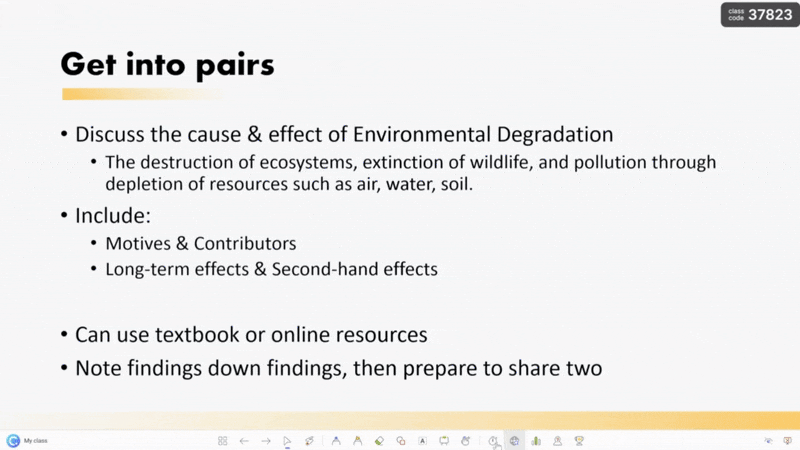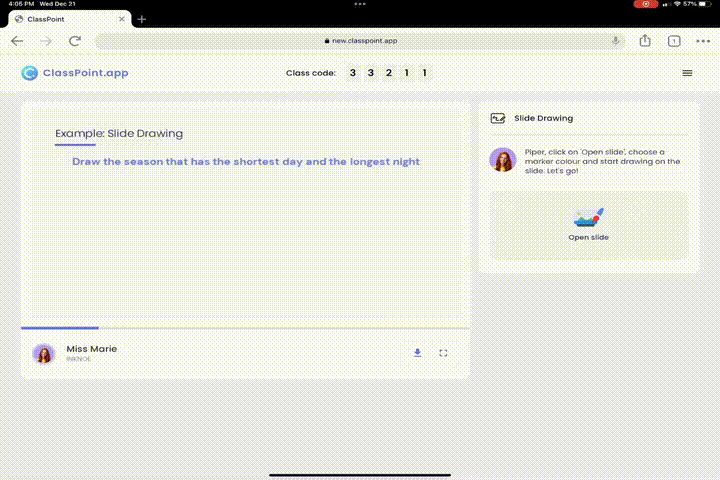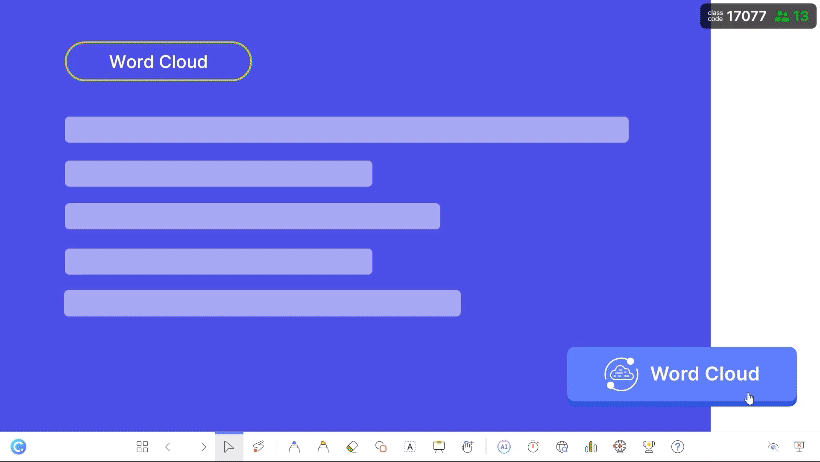Have you ever wondered why some lessons resonate deeply with your students, while others fall a bit flat? The answer might lie in your teaching style and the unique way you approach imparting knowledge and fostering learning. Finding your ideal style of teaching isn’t just about personal preference; it significantly impacts student engagement and academic success.
This guide will uncover the world of teaching styles, helping you identify your strengths and refine your approach. We’ll explore different styles of teaching, offer a self-assessment tool, and provide tips to optimize your teaching for ultimate effectiveness.
The Science Behind Teaching Styles

The concept of teaching styles and learning preferences has been a topic of educational research for decades. They compliment classroom management styles by allowing teachers to not just deliver teaching materials effectively, but also maintain a conducive learning environment. While there’s no single theory universally accepted, some frameworks offer insights into how educators can tailor their approach to enhance student learning.
One prominent approach is the VARK model, which categorizes learners based on their preferred mode of receiving information:
- Visual learners: Absorb information best through images, charts, graphs, and diagrams.
- Auditory learners: Thrive in lectures, discussions, and audio recordings.
- Reading/writing learners: Prefer textbooks, articles, and written instructions.
- Kinesthetic learners: Learn best through hands-on activities, demonstrations, and simulations.
While these preferences exist, most learners benefit from a multi-sensory approach. Another concept, Howard Gardner’s theory of multiple intelligences, suggests that individuals possess various intelligences beyond the traditional linguistic and mathematical. These include bodily-kinesthetic, musical, spatial, interpersonal, and intrapersonal intelligence. By incorporating elements that cater to these diverse intelligences, teachers can create a more inclusive learning environment.
Check out our ultimate guide on multisensory learning, including 8 practical strategies to implement more variety and diversity in your classrooms.
The research on styles of teaching acknowledges that educators themself have natural tendencies. However, the most effective teachers strive to be flexible and adapt their approach based on the subject matter, student needs, and learning objectives.
Unveiling the Teaching Style Spectrum

Educators wear many hats, and the most effective ones often utilize a blend of teaching styles. Here’s a closer look at some of the major approaches:
Authoritarian (Traditional Lecture)
This teacher-centered style emphasizes clear explanations, direct instruction, and lectures. Think classic classrooms with a strong focus on teacher explanation and student note-taking. But effective authoritarian teachers go beyond just talking. They also can benefit from the following activities:
- Incorporate checks for understanding (exit tickets, quizzes).
- Use clear, concise language and avoid jargon.
- Vary their delivery with multimedia elements (presentations, videos).
- Encourage active participation with methods like Socratic questioning.
Who is this style best for? Students who thrive on clear structure, direct instruction, and well-organized lectures.
Facilitator
With this style of teaching, the emphasis shifts to student-centered learning. Facilitator teachers guide discussions, ensuring everyone has a voice and fostering respectful dialogue. They encourage group projects where students collaborate, share ideas, and learn from each other. This approach builds critical thinking, collaboration skills, and a deeper understanding than rote memorization. However, facilitator teachers also need to:
- Set clear parameters for discussions (time limits, expected behavior).
- Refocus the conversation when necessary.
- Ensure all students participate, not just the most vocal ones.
Who is this style best for? Students who benefit from collaboration, discussion, and active participation in their learning.
Demonstrator
This teaching style is all about “show, don’t tell.” Demonstrator teachers excel at modeling skills and concepts through hands-on activities and visual aids. They might use technology like simulations or educational apps to enhance demonstrations. But, simply showing isn’t enough. Effective demonstrator teachers must also:
- Check for understanding throughout the activity (asking questions, student explanations, practice opportunities).
- Connect the dots with reflection questions or discussions to solidify understanding.
Who is this style best for? Kinesthetic learners who learn best by doing and seeing things modeled.
Delegator
Delegator teachers empower students through project-based learning and independent study. They provide guidance and support, such as scaffolding projects into manageable steps, but allow students to take ownership of their learning journey. This approach fosters critical thinking, problem-solving skills, and self-directed learning, all essential skills for success in the 21st century. However, delegator teachers need to be skilled at:
- Providing clear expectations and rubrics (what success looks like).
- Offering ongoing feedback (check-ins, peer reviews, self-reflection activities).
Who is this style best for? Independent learners who enjoy taking ownership of their learning journey and tackling projects. Learn more about 21st century teaching pedagogies, including scaffolding technique here.
Identifying Your Teaching Style: Take the Quiz!

Now, let’s explore your natural tendencies to help you determine your ideal teaching style. This isn’t a right-or-wrong quiz, but rather a tool for self-reflection.
Optimizing Your Teaching Style for Success
Now that you’ve identified your style of teaching, here are some specific tips to leverage your strengths and improve in areas that might feel less comfortable:
Authoritarian Teachers

👉 Boost Engagement: Supplement traditional lectures with interactive elements like polls, short quizzes, or quick group activities. This can help gauge student understanding, break up long lectures, and keep students actively involved in the learning process.
👉 Embrace Active Learning: Consider incorporating activities that encourage students to go beyond passive listening. Think about problem-solving exercises, case studies, or even short debates related to the lecture topic.
Facilitator Teachers

👉 Structure for Success: While fostering discussion is key, don’t underestimate the importance of clear learning objectives and rubrics. These provide a roadmap for students, ensuring everyone is on the same page about what they’re aiming to achieve and how success will be measured.
👉 Manage the Flow: Facilitating discussions requires skillful navigation. Be prepared to gently refocus the conversation if it goes off track, and ensure all students have a chance to contribute, not just the most vocal ones. Techniques like wait time and prompting questions can be helpful in achieving this.
Be sure to not neglect introverted and shy students in discussions by setting ground rules and giving everyone an equal chance to speak!
Demonstrator Teachers

👉 Check for Understanding: Hands-on activities are fantastic, but don’t assume students grasp the concept just by doing. Integrate checks for understanding throughout the activity. This could involve asking questions about the steps involved, having students explain the process in their own words or drawing, or providing opportunities for them to practice the skill independently under your guidance.
👉 Connect the Dots: Don’t let the learning stop at the activity itself. Follow up with reflection questions or discussions that help students solidify their understanding and connect the hands-on experience to broader concepts.
Delegator Teachers

👉 The Power of Feedback: Delegated learning empowers students, but it doesn’t mean flying solo. Schedule regular check-ins, in the form of a quick activity like word cloud or mood meter, with students to provide ongoing feedback. This can help identify any roadblocks they might be facing and ensure their projects are progressing as expected. Consider incorporating peer reviews or self-reflection activities to further enhance the learning experience.
👉 Scaffolding Success: Delegation is most effective when students have a clear roadmap for success. Break down complex projects into smaller, manageable steps (scaffolding) and provide clear expectations and rubrics. This encourages students to be independent learners while ensuring they stay on track and produce high-quality work.
Final Thoughts
Discovering your teaching style is just the first step in a lifelong journey of growth and development. The most effective educators aren’t defined by a single style; they’re the ones who can adapt and blend their approach to create a dynamic and engaging learning environment.
Here are some key takeaways to remember:
🔑 Growth Mindset: View your teaching style as a flexible toolbox, not a rigid mold. Embrace opportunities to experiment with different approaches and expand your comfort zone.
🔑 Student-Centered Approach: Regardless of your dominant style, remember that effective teaching prioritizes student needs and learning preferences.
🔑 Refine and Reflect: Self-reflection is a powerful tool for improvement. Regularly solicit feedback from students and colleagues, and use it to refine your teaching strategies.
🔑 The Power of Blend: The most impactful lessons often incorporate elements from various styles. A well-structured lecture (Authoritarian) can lay the groundwork, followed by a group activity (Facilitator) to solidify understanding. Demonstrations (Demonstrator) can bring concepts to life, while independent projects (Delegator) encourage deeper exploration.
Finding your teaching style is a journey of self-discovery, and this guide has equipped you with valuable tools to navigate the path. Remember, the most passionate and adaptable educators are the ones who inspire a love of learning in their students. So, embrace your unique style, keep learning, and continue to make a positive impact in your classroom!
